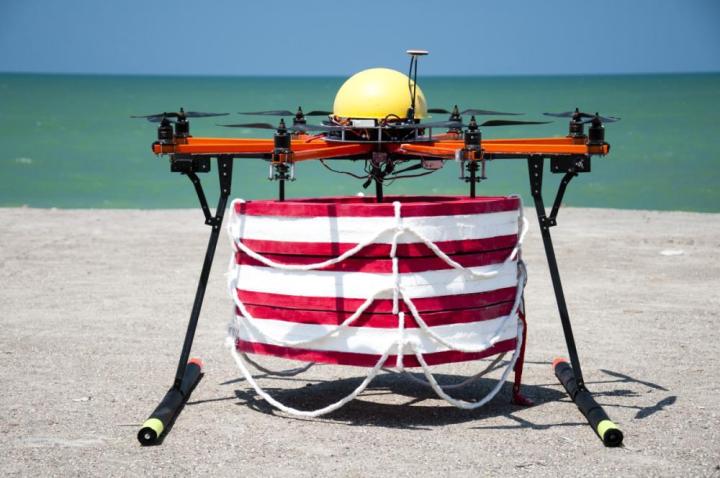
Rather than using drones to kill people or conduct aerial surveillance, Iranian researchers have built a flying robot that can be used to save people from drowning. Until we figure out how to mass produce clones of David Hasslehoff in his prime, drones like this could be the best way to keep swimmers safe.
Developed by RTS Labs in Tehran, PARS is an autonomous eight-rotor drone designed to quickly deliver flotation devices to people struggling to keep themselves above water. In recent head-to-head tests conducted in the Caspian Sea against a human lifeguard, PARS was able to deploy floatation rings to a dummy drowner 250 meters from shore in just 22 seconds — 50 seconds faster than the human swimmer.
The idea is that PARS would be used as a robotic first responder, quickly dispatching aid to those in the water before lifeguards arrive to provide medical attention. Additionally, since the drones are also outfitted with LEDs, they could also be used to conduct rescue missions at night. It’s a novel idea, and despite the fact that PARS is still just a prototype at this point, RTS Labs plans to finalize the design and deploy it internationally in the near future.
Images via rtsideas.com



